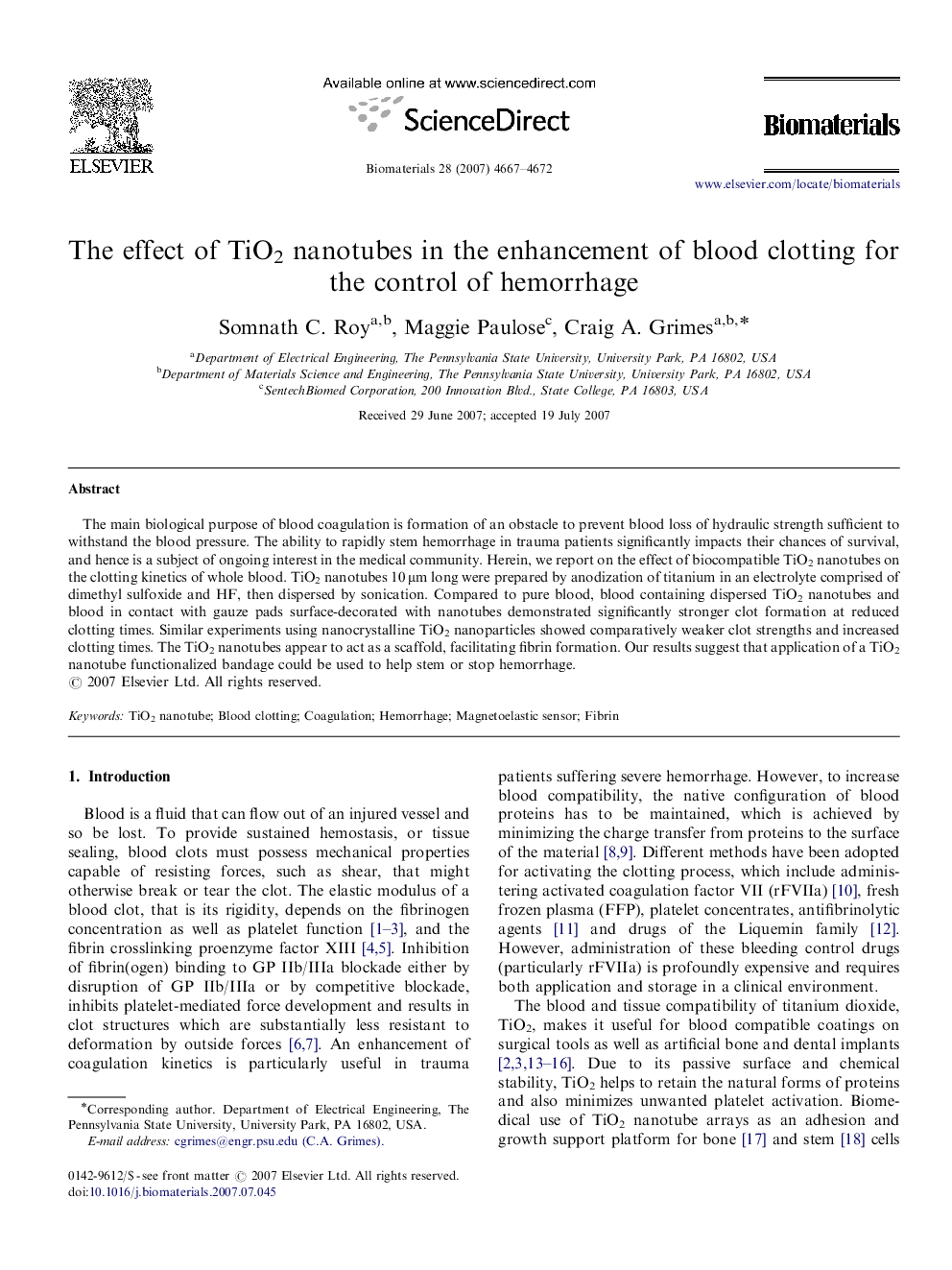| Article ID | Journal | Published Year | Pages | File Type |
|---|---|---|---|---|
| 10672 | Biomaterials | 2007 | 6 Pages |
The main biological purpose of blood coagulation is formation of an obstacle to prevent blood loss of hydraulic strength sufficient to withstand the blood pressure. The ability to rapidly stem hemorrhage in trauma patients significantly impacts their chances of survival, and hence is a subject of ongoing interest in the medical community. Herein, we report on the effect of biocompatible TiO2 nanotubes on the clotting kinetics of whole blood. TiO2 nanotubes 10 μm long were prepared by anodization of titanium in an electrolyte comprised of dimethyl sulfoxide and HF, then dispersed by sonication. Compared to pure blood, blood containing dispersed TiO2 nanotubes and blood in contact with gauze pads surface-decorated with nanotubes demonstrated significantly stronger clot formation at reduced clotting times. Similar experiments using nanocrystalline TiO2 nanoparticles showed comparatively weaker clot strengths and increased clotting times. The TiO2 nanotubes appear to act as a scaffold, facilitating fibrin formation. Our results suggest that application of a TiO2 nanotube functionalized bandage could be used to help stem or stop hemorrhage.
